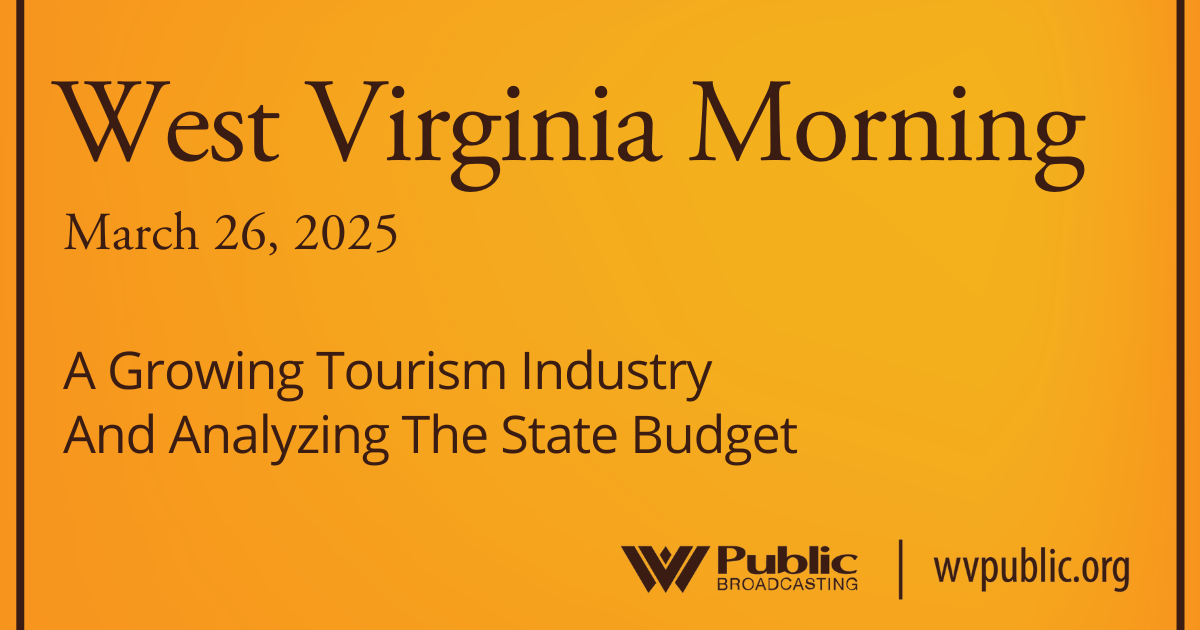During his first week in office, Gov. Patrick Morrisey delivered a picture of the state’s fiscal health in stark contrast to his predecessor’s projections of strength for the state.
“The state will have a projected deficit of approximately $400 million and that number is projected to rise more and more in the out years,” Morrisey said. “This is where we stand on day one.”
For the upcoming fiscal year, West Virginia’s budget is facing a turning point. After years of tax cuts, federal funds for many social services are set to expire – and the legislature will have to adapt to Morrisey’s new budget proposals.
In the time since, Morrisey has made it clear that his office sees these issues as “inherited” and structural from former Gov. Jim Justice – pointing to one-time funds used for large ongoing costs like Medicaid rather than finding consistent funding sources.
“I think it’s coming across as more dire sounding than it is,” Sen. Eric Tarr, R-Putnam, said.
Tarr is the outgoing Senate Finance Chair, having held the seat for three years. He says he has worked to create flat budgets with the legislature.
While Justice ceased providing six-year budget projections during his time in office – a practice Morrisey plans to bring back — Tarr worked with available legislative data to create revenue reports, within a margin of error.
Still, he says Justice’s priorities could diverge from the concrete realities of running the state.
“Governor Justice was a very big, big picture guy on going out and, you know, let’s tackle the biggest mountain we can find,” Tarr said. “And really, sometimes there wasn’t as much a plan for tackling that biggest mountain you could find, but that went at sometimes the sacrifice of having somebody who was who really had an operational knowledge of the agencies.”
While Tarr is cautiously optimistic about Morrisey approach, he says Morrisey’s plans to audit expenditures could still be difficult logistically.
In the meantime, Tarr says he expects job growth through past legislative funds designated to companies like Nucor to propel job growth in the state – but those just come a little later than expected in projections’ margin of error.
And incoming jobs will also mean an incoming demand for social services.
“If you have people who are coming in in order to go to work, they need childcare for their kids, in order to be able to get away from the house to go to work, rather than somebody having childcare and still sitting at home,” Tarr said.
But those services – like health care costs and investments in childcare – have always been in the push and pull of balancing the state budget with years of tax cuts.
Sean O’Leary is a senior policy analyst at the West Virginia Center on Budget & Policy. He says the state’s position with those social services, which often enable and attract workforce participation, is already weakened.
“The risk that you run when you make cuts to the services is that you make the state uncompetitive to our neighbors,” O’Leary said. “When it comes to public services, we already spend less per child on child care. We already spend less per student on (K-12) education. We already spend less on health care and Medicaid. That’s not good for the state.”
As for the promise of tax cuts, O’Leary said the state’s strategy for job growth has long been lagging.
“We’ve been down this path before, when we tried this under the Manchin administration by cutting the corporate net income tax, the business franchise tax, the parts of the income tax and the sales tax,” O’Leary said. “At the time, it was called the most pro-growth tax reform in the country, and it was supposed to create jobs. It was supposed to pay for itself. All these things ended up costing in 2015 when they were all fully in effect, cost about $425 million which you adjust for inflation, it’s about the size of the income tax cuts that we’ve recently passed. And since then, West Virginia has lagged the rest of the nation when it comes to job growth.”
And many federal funds, like Medicaid expansion, are no longer in play for the state budget as pandemic-era federal bills have lapsed. This lapse also comes amid questions about what President Donald Trump will preserve as he plans to reassess and cut trillions in federal program funding – Morrisey says almost half of the state’s overall budget currently comes from federal funds.
O’Leary says his analysis sees a need to preserve social programs – while passing legislation that thinks more expansively about the potential for taxes that would not be levied against most West Virginians directly.
“You know, we could keep the current income tax cuts and add new brackets on top, so that no one below $100,000 would would see their taxes increase and would still raise hundreds of millions of dollars,” O’Leary said. “Doing that, you know, almost closes our budget gap.”
The governor releases his annual budget proposal along with his state of the state on the first day of the legislative session. From there, it’s up to the state legislature, including new Senate leadership, to come up with a budget that both chambers can pass and the governor will sign.
